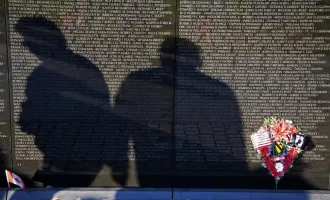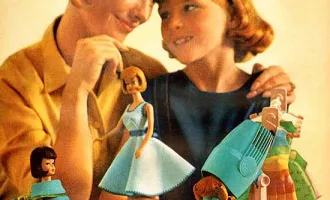Critical Mass Turns 20
Love it or hate it, Critical Mass has become a San Francisco institution and has forever changed the role of the bicycle in cities. What started with a small group anarchistic pioneers 20 years ago, right here (where else!) in San Francisco, has now become an international phenomenon, with Critical Mass rides occurring in cities from South America to Europe. Last Friday was the 20th anniversary ride and saw a huge turnout of a diverse group of people, many traveling from distant countries to join. Leaving from the Ferry Building at 6 p.m., as they do every last Friday of the month, the many thousands of bicycles stretched from the Embarcadero nearly to the Civic Center, a festive parade of lights, costumes, sound systems and lots of joyful cheers.
No longer a fringe movement, Critical Mass now has parents pulling kids, old people, young people, business people, artists, crazily dressed people, well-dressed people – anyone, in fact, who supports urban biking. The Critical Mass tactic does, of course, annoy many motorists, whose journeys are delayed for the 10 or 20 minutes that the bike parade blocks the street.
This confrontational stance is a form of civil disobedience, which, like most protests, has specific political goals: the riders seek to challenge the dominance of cars in our urban spaces and to demand more room for bikes and pedestrians. In the last 20 years, there have been momentous changes in this regard that can be attributed to the trail-blazing of the Critical Mass rides.
Following in their steps, another group, the San Francisco Bicycle Coalition, now with 12,000 members, has in the last few decades evolved into a powerful advocate for bicycling. It has the same goals as Critical Mass but seeks to reach them through dialogue and lobbying instead.
The tolerance for bikes in San Francisco and the number of dedicated bike lanes have both grown in proportion to the growing number of people who are riding bicycles to work and school in the city. Still, the space for bikes is insufficient to meet current needs, and certainly must be expanded before bikers of all ages feel safe riding on our roads.
The automobile is a noisy, dangerous and dirty machine that takes up a lot of space on the streets and makes the urban experience considerably less pleasant for pedestrians – while alienating drivers from each other by separating them with walls of glass and steel. The bike meanwhile is a quiet, (relatively) safe and clean machine that takes up very little space on the streets and encourages people to get exercise while allowing them to interact face-to-face.
For these compelling reasons, more and more people are riding bikes, and someday we will have roads that are safe enough for everyone to feel comfortable joining the biking/walking movement.
The city government, recognizing both the advantages of bicycles as transport tools and the wishes of a growing segment of the population, has in recent years finally started to invest in bike infrastructure.
Last week, it was announced that Masonic Street from Fell to Geary will be rebuilt as a bicycle boulevard, with a row of trees in the middle and separated elevated bike lanes on the sides. Earlier this year, JFK Drive, through the eastern part of Golden Gate Park, was repainted to create separate bike lanes. The status quo is something that we as a society created and can choose to change if we have the vision. This is happening now for urban transit, and we have the original bikers of Critical Mass to thank for the bold vision they proposed with their quirky mobile gatherings 20 years ago.


